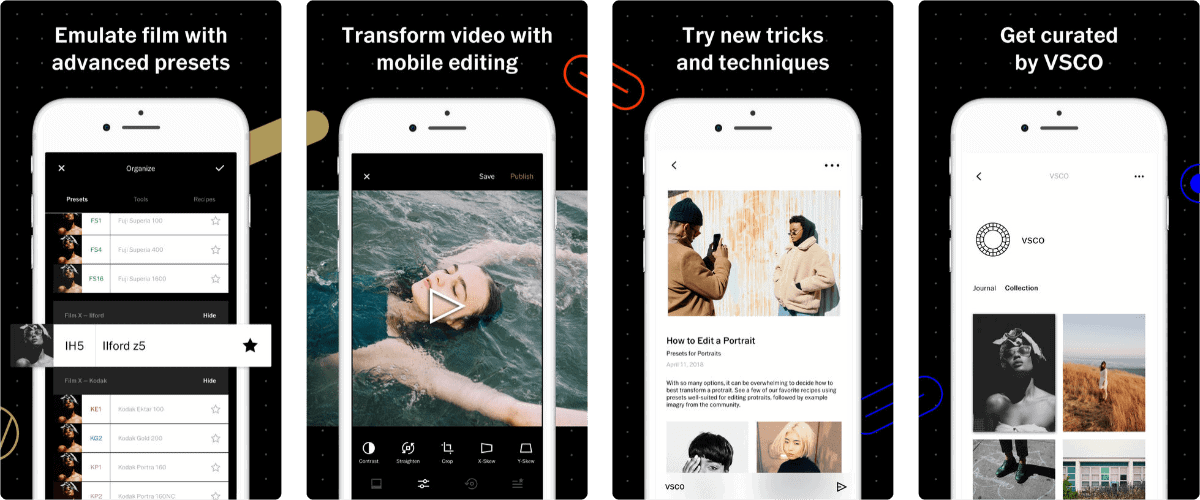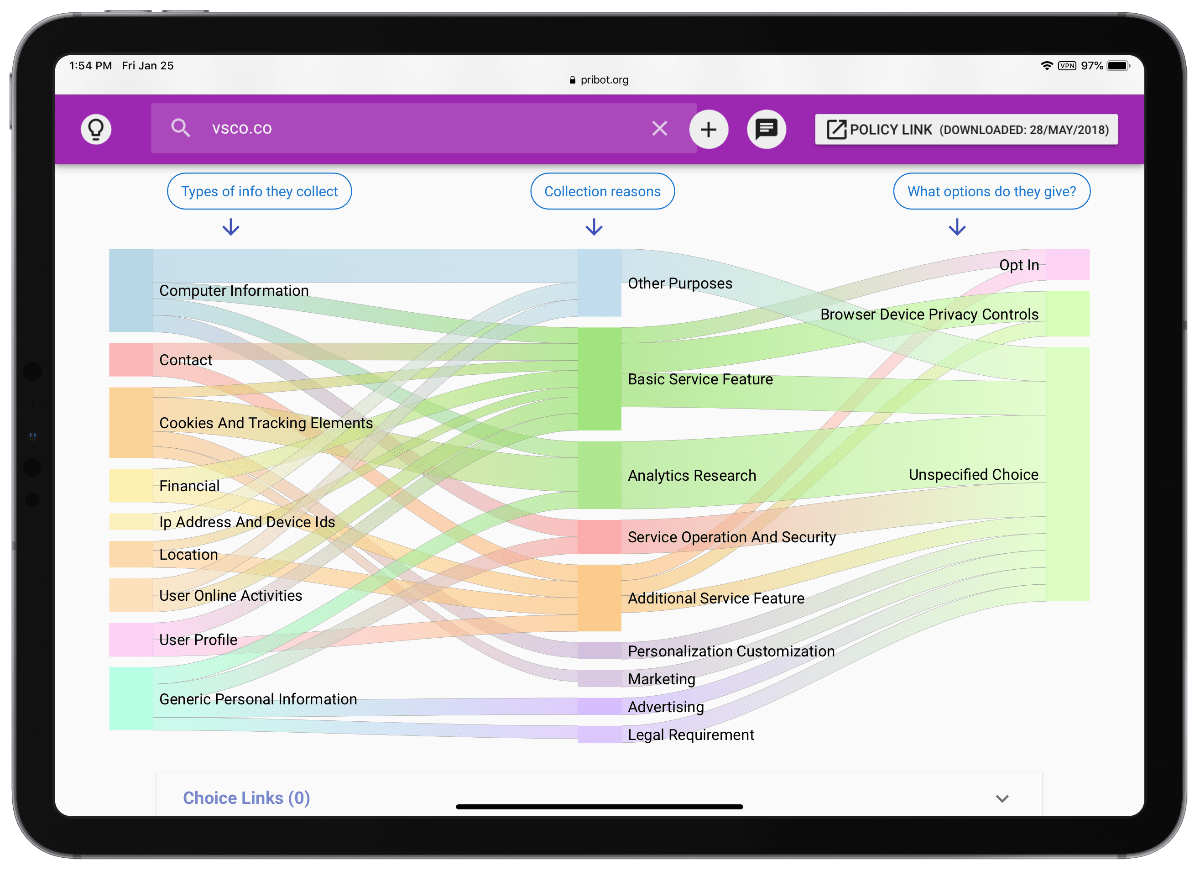Recently Bryan Chaffin challenged me to examine the VSCO privacy policy and translate it from lawyer-speak to human-speak. Here’s what I found.
[VSCO X Film Presets and What They’re Best For]
Switching
It started on an episode of ACM, when I told Bryan that I deleted my Instagram account and switched to VSCO. My choice was based on principal. I think Facebook is an unethical company, and since it owns Instagram I wanted to move my content elsewhere.
I moved to VSCO. I’m a huge fan of the app and I’ve written about it plenty of times in the past. I like its photo editing features, but it’s also a platform for photography. Unlike Instagram though, VSCO focuses more on the creative aspect of Instagram, instead of how many likes you get.
Although privacy is important to me, I didn’t actually look at VSCO’s privacy policy. But now I have.
VSCO Privacy Policy
Fortunately, VSCO’s privacy policy is already easy to understand.
Data VSCO Collects
- Data You Provide: When you sign up you provide your name and email address.
- Data From Third Parties: If you link your VSCO account to another service like Facebook, the third party may pass information to VSCO.
- Metadata: This includes data related to your photos and videos, like keywords you add, names, geographical/location data, comments, and more.

Cookies and Analytics
- Analytics: VSCO collects analytics data to measure traffic and usage trends. This includes information sent by your browser as part of a web page request, like browser extensions, history, and window size. It says that this data is collected in aggregate and can’t be easily used to identify individuals.
- Cookies: VSCO uses cookies that can uniquely identify your browser and lets you log in faster. Example: If you choose to save your login information with the website. It tracks which VSCO pages you view, links you click, and other actions on its website.
- Log Files: Log file information contains more browser data, like IP addresses, browser type, number of clicks, pages viewed, etc.
- Web Beacons: VSCO uses web beacons. These are clear GIFs that can anonymously track usage patterns. Beacons may also be used in emails you receive from VSCO. This tracks which emails are opened and which links are clicked.
- Device Identifiers: Device identifiers uniquely identify your mobile device. Virtually all smartphones have an identifier. These are used for how you use VSCO.
- Location Data: If you give VSCO location access (at least on iOS), it can provide usage information on how you use VSCO. Additionally users can voluntarily add location data to content.
- Ads: VSCO lets third-party ad networks collect information on how users use the service. I’ve personally never seen ads on the VSCO website or app though, so I’m not sure how this is used.
Interpretation
The policy is much longer so I’ll just briefly touch on other things. When it comes to security, VSCO uses “commercially reasonable safeguards to preserve the integrity and security of all information collected through the Service.”

I’m going to take a guess and say that information is not encrypted, because of the line “VSCO cannot ensure or warrant the security of any information you transmit to VSCO or guarantee that information on the Service may not be accessed, disclosed, altered, or destroyed.”
The policy is pretty standard when it comes to companies. It could be better, but it’s not a policy I’m personally concerned about. A lot of the usage information VSCO collects does sound like a lot, but most of that type of data collection is used by web developers to improve and troubleshoot the service.
Having VSCO remove or limit third-party advertising would be nice, but again the app doesn’t have any ads, and neither does the website. Also, VSCO has a membership program called VSCO X, but it doesn’t sound like there is a separate policy for members. Some services let users pay to remove ads, but VSCO doesn’t appear to do that.
[VSCO X Review, Bringing Analog Film Presets to Digital Photographers]